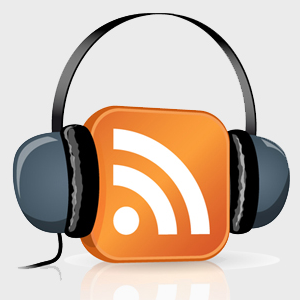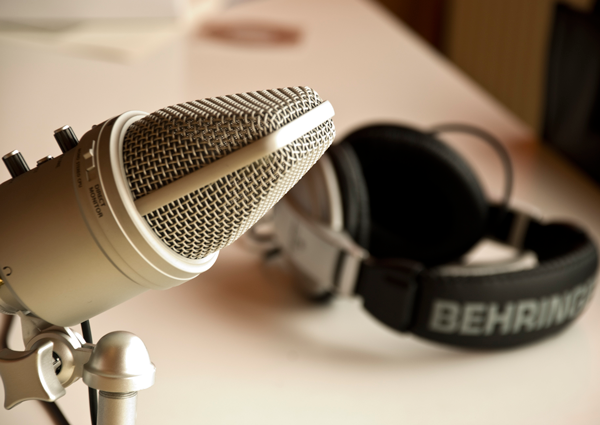 Podcasts were born in a download era, but we now live in a streaming world. When podcasts arrived on the scene, streaming wasn’t an option. Today we have ubiquitous LTE and nearly ubiquitous WiFi. The high-speed mobile bandwidth should make it easy to stream audio such as podcasts on demand instead of waiting for a time when you can download a large file. In addition, the download model is still inextricably tied to iTunes. This means limited data on podcast performance and even more limited features.
Podcasts were born in a download era, but we now live in a streaming world. When podcasts arrived on the scene, streaming wasn’t an option. Today we have ubiquitous LTE and nearly ubiquitous WiFi. The high-speed mobile bandwidth should make it easy to stream audio such as podcasts on demand instead of waiting for a time when you can download a large file. In addition, the download model is still inextricably tied to iTunes. This means limited data on podcast performance and even more limited features.
Podcasters that switch to streaming can immediately capture three benefits:
- More measurability – they will have the type the data that brand advertisers require and better understand their audience
- More inventory – surprisingly, they will also have more ad inventory that can translate into higher revenue
- More audience engagement opportunities – audience is king in podcasting but as a recorded media, real-time engagement has high hurdles that streaming overcomes
Part 1 of this blog series focuses on the implications of measurability and Part 2 explores the impact streaming can deliver on ad inventory and audience engagement.
Delivering Measurability for Advertisers
 Most reports from the IAB’s Podcasting Upfront Showcase were favorable. It was designed to introduce brand marketers to new ways for reaching consumers that skew young and affluent. By many accounts, the event appears to have communicated that value clearly.
Most reports from the IAB’s Podcasting Upfront Showcase were favorable. It was designed to introduce brand marketers to new ways for reaching consumers that skew young and affluent. By many accounts, the event appears to have communicated that value clearly.
The one negative comment heard from an attendee was that there really was no reliable measurement discussed. The time a podcast is downloaded is all that is typically known. Podcasters do not know if the consumer listened to the podcast after the download nor do they know when or how long they listened. For brand advertisers, this data is critical. They need to know whether their ad was heard and when it was heard in order to track campaign performance.
When audio is streamed, this data is all trackable. There was discussion at the Upfront Showcase about how promo codes are a tool that can shed light on campaign effectiveness. The direct response advertisers that currently make up 89% of podcast advertisers by one recent analysis often welcome this approach. However, many brand advertising campaigns are designed around awareness or real-world actions and are time sensitive. Promo codes don’t always fit with that model.
A shift to streaming can address this data gap and better align podcast capabilities with brand advertiser requirements. It also would enable podcasts to participate in programmatic advertising that could significantly increase advertiser reach. While podcasts’ famous live-read ads from the hosts may not be a good candidate today for real-time bidding, it certainly could fit within a high value programmatic direct model.
Today, there is significant friction in simply finding out what inventory is available, much less demographic data. Media buyers are starting to expect quicker avenues to answering these questions than submitting a form and requesting a meeting with a podcast network sales rep. Streaming can provide the data that media buyers require and make it easier for podcasters to deliver the information quickly and accurately.
Leveraging Measurability for Audience Understanding
 More data can also deliver a better understanding of the podcast audience. Steven Goldstein of Amplifi Media reported that a “recent analysis of listening habits from the NPR One app reveals that a mere 18 words into a segment, people are deciding whether they will continue listening.” Because NPR One is a streaming-only app, it can access that data and determine how to improve its segment programming. Imagine if you had 15 or 30 minutes of your best content of the year, but listeners abandoned the show because the introduction was weak.
More data can also deliver a better understanding of the podcast audience. Steven Goldstein of Amplifi Media reported that a “recent analysis of listening habits from the NPR One app reveals that a mere 18 words into a segment, people are deciding whether they will continue listening.” Because NPR One is a streaming-only app, it can access that data and determine how to improve its segment programming. Imagine if you had 15 or 30 minutes of your best content of the year, but listeners abandoned the show because the introduction was weak.
Everyone knows about this risk. It is the equivalent of a headline and the opening paragraph for print media. The difference for audio is that you can see it clearly when you have streaming data, but miss the data entirely in a download model. Access to this data could even allow you to recast your intro if your abandon rates were above average to make sure you have maximum audience for your best content. Audience retention can also ensure that you maximize ad impressions later in the podcast. This is one way you increase effective ad inventory.
Similarly, streaming can reveal where listeners skip content or listen to it again. What if you had a recurring segment about half way through a podcast and realized that many listeners were skipping ahead to that segment and then ending the session afterward? Without this knowledge you might arbitrarily decide to eliminate that segment and inadvertently lose audience as a result. Access to this information might lead you to developing a separate podcast with only that segment material or taking a hard look at your other content and seeing what needs improvement.
Some podcast cheerleaders may be thinking NPR One is news oriented and no segment will have the loyalty engendered by personality-driven or topic-specific podcasts. They may have a point, but Goldstein has an answer for this argument. His article adds that a “set of data from one of the podcast aggregators, shows an attrition rate of 40% in the first 7 minutes. Longer podcasts should expect 2/3rds of the audience is gone sometime between 20 and 60 minutes.” Can this type of data help podcasters refine their programming to retain more audience for longer periods? The information is available to streamers, but not downloaders.
Increasing Ad Inventory and Audience Engagement
The data is convincing that greater measurability of podcast consumption provides tangible benefits to podcasters. It fulfills a requirement for the brand advertisers that podcasters were attempting to woo last week at the IAB Podcast Upfront Showcase. It also provides insight into audience behavior during a podcast. This measurability is absent in today’s dominant download model. These factors alone would likely entice podcasters to get more serious about transitioning their audience to streaming. Two more equally strong reasons to shift to streaming will be included in tomorrow’s post: creating more ad inventory for free and greater audience engagement.
Related Posts
The Present and Future of Podcasting
Why Audio is the Quintessential Mobile Media
Creating a Great Content Interaction Experience on Mobile
